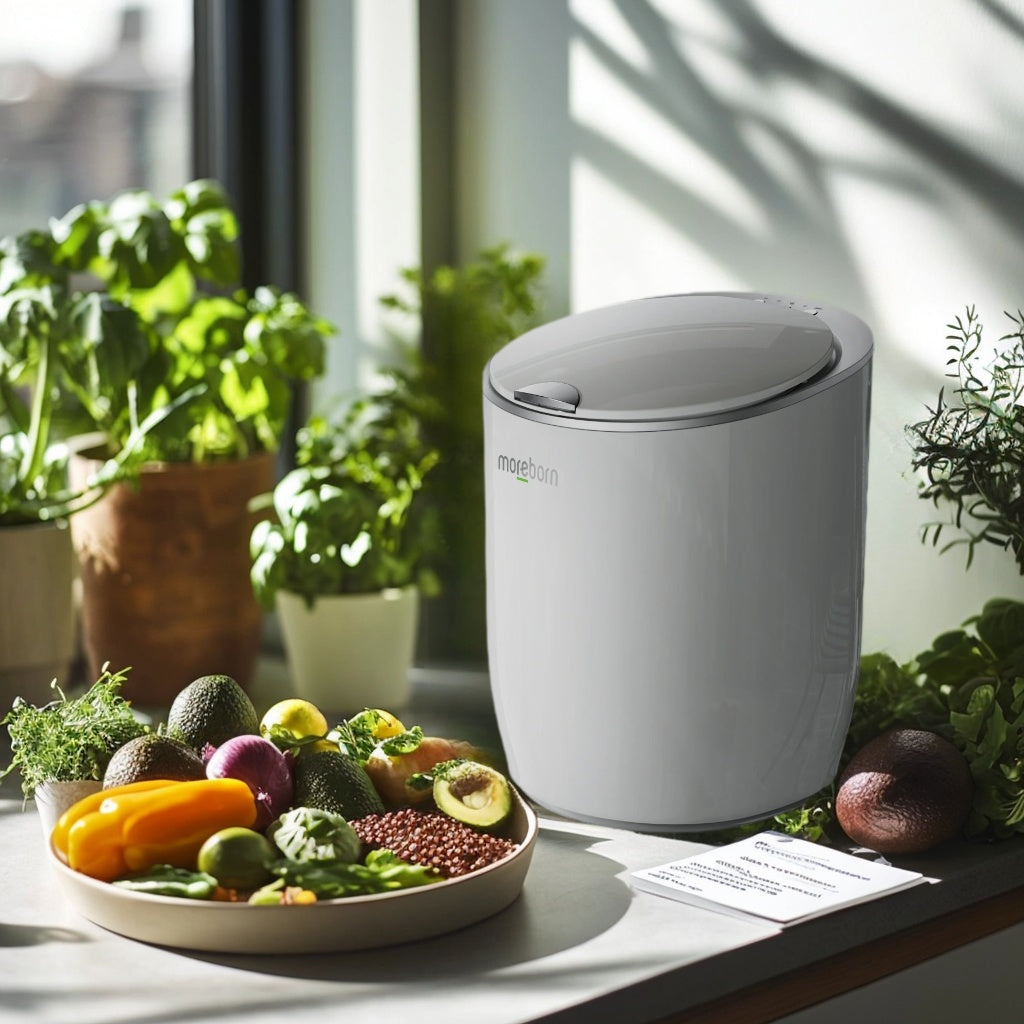
Climatarian Diet + Electric Composters: The Science of Turning Leftovers into Black Gold ♻️
Why Climatarians Should Master Composting
Globally, 1.3 billion tons of food are wasted annually (FAO). While the Climatarian diet focuses on reducing carbon footprints, even the most eco-conscious eaters generate scraps—this is where electric composters (like Moreborn, Mill, Lomi) become essential.
Key Facts: 🔬 UC studies show carbohydrate-rich scraps (bread, grains) increase microbial activity by 37% ⚡ Electric composters work 8x faster than traditional methods and reduce methane emissions by 75% (EPA 2023)
3 Science-Backed Secrets for Supercharged Compost
1. The 30% Rule: Ideal Food Waste Ratio
✅ Add: Coffee grounds, eggshells, veggie peels (nitrogen/minerals) ❌ Avoid: Meat/oils (attract pests) 💡 Moreborn trials: 30% food waste + 70% yard waste yields the highest nitrogen content
2. Pre-Treatment for Faster Breakdown
-
✂️ Chop scraps to coin-sized pieces
-
🍞 Toast stale bread (reduces moisture)
-
🧄 Ferment alliums separately for 48hrs (neutralizes pungency)
3. The Carbon/Nitrogen Balancing Act
| Material Type | C/N Ratio | Examples |
| Browns | 6:01 | Dead leaves/paper bags |
| Greens | 15:01 | Veggie scraps/coffee grounds |
Golden Ratio: 2 parts brown + 1 part green (MIT Environmental Engineering)
5 Burning FAQs
Q1: Can I compost moldy food?
Yes! Mold spores aid decomposition (UC Berkeley). But discard chemically preserved items (e.g., store-bought bread).
Q2: Are electric composters energy-intensive?
Models like MB12 use just 1.73kWh/day (≈ fridge energy).
Q3: Will it smell bad?
Follow the "3B Method" for odor-free composting:
-
Balance C/N ratio
-
Break materials down
-
Breathe (aerate regularly)
Q4: How soon can I use the compost?
Traditional: 3 months | Electric: 3-7 days (adjust for humidity).
Q5: Is this better than synthetic fertilizer?
✅ Improves soil water retention by 20%
✅ Reduces nitrate leaching by 72% (USDA)
Real-World Success
👩🌾 @EcoWarriorMom’s log:
"My Moreborn composter handled Climatarian food scraps (bean pulp/quinoa). Tomato yields jumped 40%—zero chemicals needed!"
Credible Sources

